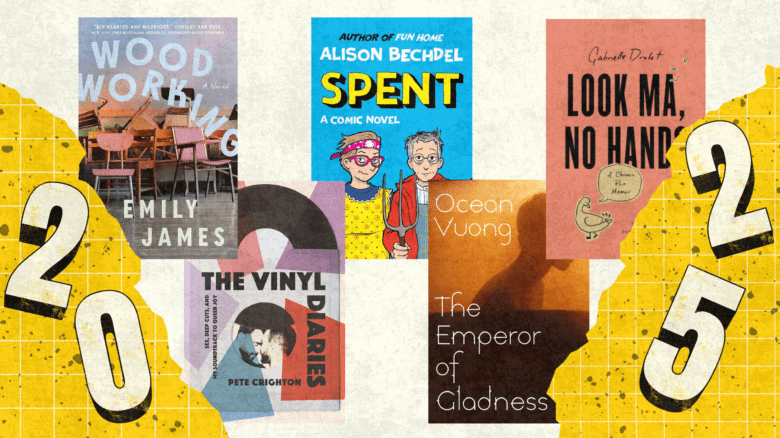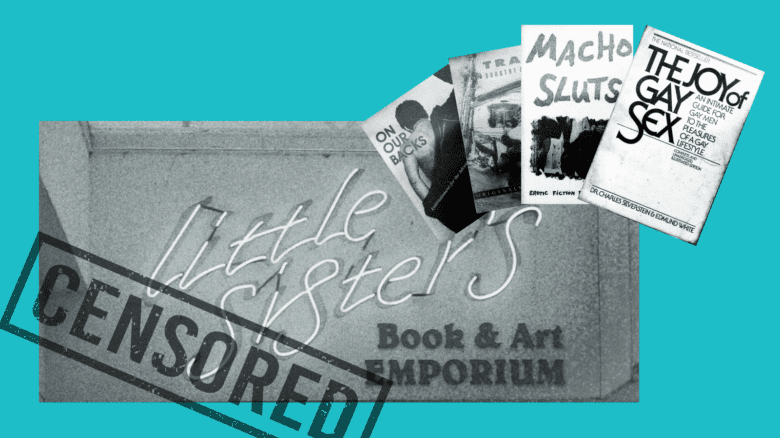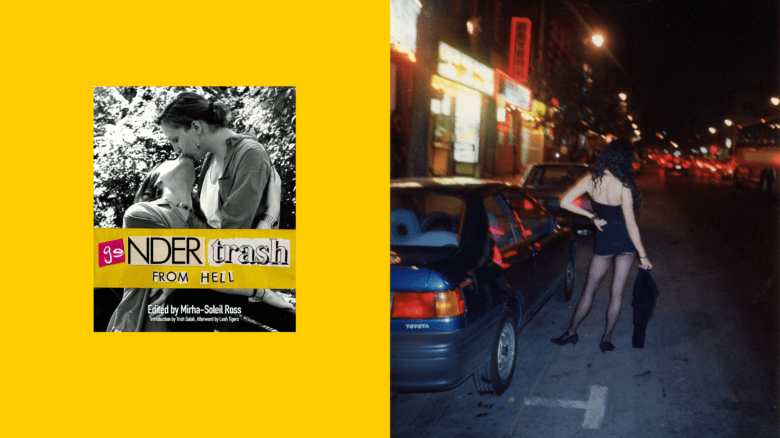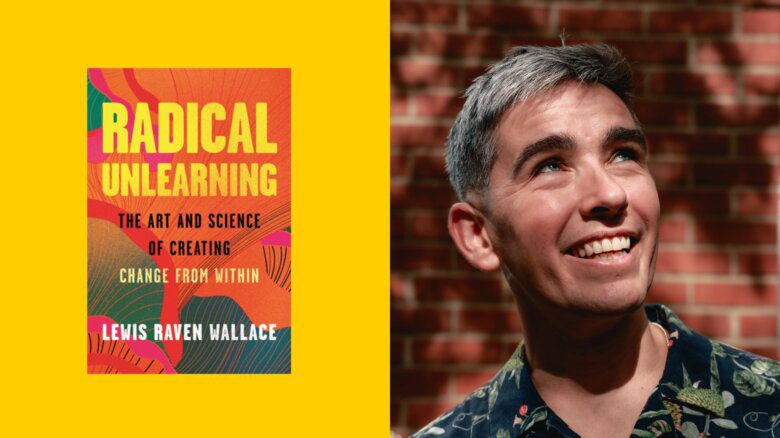On November 9, 1995, author and journalist Judy Steed phoned John Miller, then chair of the journalism school at Ryerson Polytechnic University (now Toronto Metropolitan University), to ask him why the university was employing Gerald Hannon as a journalism instructor.
Steed, who had recently learned that Hannon was teaching there, had criticized his 1977 article for The Body Politic called “Men Loving Boys Loving Men,” a controversial piece of journalism that saw Hannon charged with, and exonerated of, criminal indecency. (Also charged were the other officers of The Body Politic, a predecessor of Xtra, also published by Pink Triangle Press.) It is also possible that Steed had taken issue with Hannon’s negative review of her 1994 book, Our Little Secret: Confronting Child Sexual Abuse in Canada, in which Hannon wrote that Steed “has let pity and outrage run away with her senses.”
Steed brought Hannon’s writing and opinions up again with Miller a couple of days later, this time in person in front of attendees of a Women in Media conference attended by, among other journalists, Toronto Sun columnist Heather Bird. Bird, over the next few issues, wrote a series of columns suggesting that Hannon’s writings and attitudes about intergenerational sex made him a danger to the university students he was teaching. A media pile-on ensued, as columnists and commentators, including Hannon himself, opinionated about his suitability to teach, considering what he had written.
After almost two weeks of debate, Hannon figured it would fizzle out. It didn’t. It exploded. On November 25, 1995, the Toronto Sun published the front page story headlined “Ryerson prof: I’m a hooker,” which outed Hannon as a sex worker, an aspect of his life that hadn’t been part of the original controversy. Now it was the core of it.
In this excerpt from Immoral, Indecent, and Scurrilous: The Making of an Unrepentant Sex Radical, published this month by Cormorant Books, Hannon describes how that headline happened and what happened next.
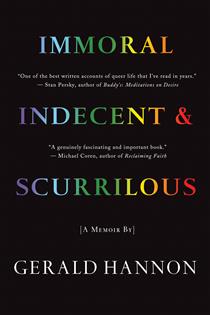
Credit: Courtesy of Cormorant Books
He didn’t look at me when he spoke. We were strangers approaching each other on the street. I was heading home on a wintry evening in March 1996. When we came abreast, he continued to look straight ahead, but as we passed, he whispered, “You’re famous.” He was right. Every good self-mocking Canadian will demur and say, “Well, I was world famous—in Toronto,” but by that time there had been headlines in newspapers across the country, many appearances on radio and on television, stories in the American press, headlines in a Moscow newspaper, a cover story in The Guardian, an invitation to appear on Jerry Springer, an attempt to buy the television rights to my life story, and a request from a young choreographer to turn that story into a ballet. I had been compared, not unfavourably, to Socrates. I had been compared, not at all favourably, to Jane Austen. If not famous in the pristine sense, I could at least make a decent claim to infamy.
I keep few secrets, but only my friends and some Ryerson colleagues knew I was a prostitute. Only archivists would have been aware of my fifteen-year history as a gay activist, even though that history had involved several brushes with the law. And only other writers and colleagues in the magazine and newspaper business knew my work as a journalist. All those histories were seemingly in balance, and of no interest to anyone else, until mid-November 1995.
It would end with my being caught out in a truth. On the evening of November 24, 1995, I received a call from Thane Burnett, a journalist with the Toronto Sun. I had grown accustomed to speaking with the media—my life had become a blur of radio, television and print interviews over the previous ten days. I have often been thought naive at best, or a media whore at worst, for acquiescing to nearly every interview request that came my way, but it was the express wish of Don Obe, my boss [at the university’s school of journalism], that we not avoid the media and that we tell the truth. We had nothing to hide, he said. He was a longtime journalist with an illustrious history, and I admired him immensely. I was happy with his strategy. I don’t like lying, except on social occasions. As well, hearing “no comment” repeatedly from a source is a journalist’s nightmare, and I did not want to visit that on any of my colleagues, no matter what they thought of me. I had nothing to hide. I would tell the truth.
A very few minutes after I began talking with Burnett, I began to agonize about whether I would indeed tell the truth this time. I could see where he was going. He had in his possession a photograph showing me and a much younger man naked together in bed. It was flattering to neither of us—I looked like a predatory yeti and he like a lamb in the headlights. The photograph was a still from Nik Sheehan’s film Symposium, the one I’d appeared in and which he was promoting at the time with images and press releases. The reporter had found the photo in Fuse, a Toronto arts magazine.
“The classroom curtains had been drawn tight for fear that a nearby rooftop might harbour a sniper.”
Burnett began questioning me about the script and why I had chosen to play a hustler, and wasn’t the film supposed to be based on people’s actual experiences? I was evasive, and no doubt sounded so. I could sense he was soon going to pose The Question. I was getting panicky. My life had been in constant turmoil for two weeks. I’d continued to accept almost every interview request that came my way—they were stressful occasions, often with interviewers who were as near to hostile as journalistic propriety would permit. I wasn’t sleeping well. I needed pills. I was plagued by abusive phone calls. It was almost impossible to continue to teach. On November 23, the day before Burnett’s call, the school had received a serious threat to my life. A few days later, on November 28, police arrested a forty-year-old man and charged him. I never learned how that played out. If students wanted to meet with me, the administration had dictated that they had to be brought, one by one, to the office in which I was locked. When it came time to teach a class, I was escorted to the room by security personnel who remained outside the door, allowing students in one at a time. The classroom curtains had been drawn tight for fear that a nearby rooftop might harbour a sniper. When it was time for the class to begin, the security officers locked the door from the outside and remained, one on each side, keeping guard. I stood inside, at the front of the class, before a room of anxious faces. And then I was supposed to teach a class on magazine journalism. I’m a pretty good teacher, but I did a terrible job. The students were kind and said I did just fine, though they would comment later, to me and to the press, that I looked an exhausted wreck, and they were right.
That had been my life for nearly two weeks. And now I was about to face The Question, the answer to which could determine my future as a teacher and my career at Ryerson. I can’t remember how he phrased it, but it was direct. Was I a prostitute? I believe I dithered incoherently for a few moments, and then I said that yes, I was. I wish I could say that my devotion to truth was my only consideration, but I feared no reporter would ask that question of a not particularly gorgeous fifty-one-year-old man if he didn’t already have some solid evidence in his hands. My fear of being deemed a liar—the disreputable obverse of putting one’s faith in truth—was also a motivator.
“The article was accurate and quoted me extensively. Even some of my supporters would soon begin to feel that my commitment to full disclosure was not always in my best interests.”
And then I talked. Burnett described our conversation as “lengthy and startlingly frank.” I wanted, as best I could in the confines of a media interview, to stress that my sex work was not something I was ashamed of, that I was high-spirited about it, that it was a smart choice for a freelance writer and part-time instructor. I joked that a lot of people have to get grants to make a go of a life in the arts, that I’d been hustling off and on since 1987 and that everyone I was close to, personally or professionally, knew the score. (At Ryerson, Don Obe knew, as did fellow instructors and good friends Lynn Cunningham and David Hayes.) I stressed that prostitution was not illegal in Canada. I told him that I had not discussed it with my students. I think the last thing I said to him was, “I hope you’re not going to make too much of this.” Despite my conviction that the world is organized to make me happy, I did have the feeling that the paper might run with the story. Before I went to bed, I called Ed Jackson and told him what had happened. I discovered later that he, similarly worried, had called Rick Bébout after speaking with me.
The front-page headline on the Toronto Sun the next day, Saturday, November 25, 1995, read, in three-inch block letters: “Ryerson prof: I’m a hooker.” The subhead below read “Gerald Hannon says he supplements his teaching income with prostitution.” The article was accurate and quoted me extensively. Even some of my supporters would soon begin to feel that my commitment to full disclosure was not always in my best interests.
Heather Bird’s column that same day was headed “Ryerson silence is telling.” It began with a note of almost grudging admiration: “You’ve got to hand it to him. That Gerald Hannon is one provocative old bugger. Once again, the libidinous adventures of Mr. Hannon, esq., are making front-page news.” I have to hand it to Bird as well. At the time, I was too distraught to appreciate how cleverly structured the piece was, how it built to a rhetorical frenzy that Ryerson felt it could not ignore. She was very persuasive. “Can you be a neurosurgeon by day and a prostitute by night?” she wrote. “Yes. Does that make you a bad neurosurgeon? No, of course not. Would you, as head of a hospital, hire a neurosurgeon who moonlights on his back? Not likely. Why? You don’t have to answer that. When it comes to hiring, you don’t have to justify. It’s a judgment call.” She conceded that Ryerson had exercised good judgment when they first hired me to teach, presumably because of my reputation as a writer. But. Did the school know I was “a part-time whore”? Did they not care? She moved on to suggest that I was the chief architect of my own misfortune, that I could have shut down the controversy “quickly and quietly by refusing to give interviews.… Instead, Hannon was co-operative when asked to expand on his world view, up to and including an hour-long debate on national television.” She added a touch of sympathy. Was I ill? She wondered. “Is this a hangover from being physically abused as a child? Is he manipulative? Or merely naive?… And while we fiddle,” she wrote, “Ryerson burns.”
She declared that Ryerson’s national reputation was on trial, that I had become a “flashpoint for an institution under siege.” She added, “There is a clear leadership vacuum at the top levels of the university.” She called for someone “somewhere in the ivory tower [who] thinks it’s wrong for adults to have sexual congress with children. That there is nothing noble about the sale of human flesh. That those views aren’t representative of the school or its values. Or should we simply let the silence speak for itself?”
The silence was broken early the next morning, Sunday, November 26. There was a knock on my door. It was a courier, hand-delivering a letter.
The letter, my third from VP Michael Dewson, announced, “We are investigating whether your alleged conduct is unbefitting the status of a member of the teaching community at Ryerson.” I was told to attend a meeting in his office at 9:30 a.m. the following day. I was also told that I was suspended with pay, that I was to have no contact with my students, that I was not to be permitted on campus and that I was to turn over all classroom materials and student evaluations to John Miller, chair of the School of Journalism.
“I had certainly never had sex with any of my students, as clients or otherwise, and I didn’t ask for student ID. But several young men wanting my $30 student rate had self-identified as Ryersonians.”
I don’t remember much about that meeting with Dewson. I do remember that I was bolstered by the presence of CUPE representative Angela Ross; her warm, level-headed, almost maternal charm and fierce sense of justice would make her an important ally in the months to come. She could laugh at the more absurd elements of the situation, and I sometimes needed help seeing the funny side to what I was going through.
I also remember that I lied—or was guilty, at least, of suppressio veri. Dewson, frigid with distaste at having to deal with matters so indelicate, asked, through pursed lips, if I’d ever had sex with a Ryerson student. I said I’d never had sex with any student in my classes, but that I didn’t ask for student ID so couldn’t say for certain whether I’d had that particular pleasure with someone not in my class. That statement was true, as far as it went. I had certainly never had sex with any of my students, as clients or otherwise, and I didn’t ask for student ID. But several young men wanting my $30 student rate had self-identified as Ryersonians, and I’d based my scene in Symposium on one such encounter. (When we were filming, the director and I had debated having the client arrive wearing a Ryerson jacket. Perhaps it’s just as well we decided against it.)
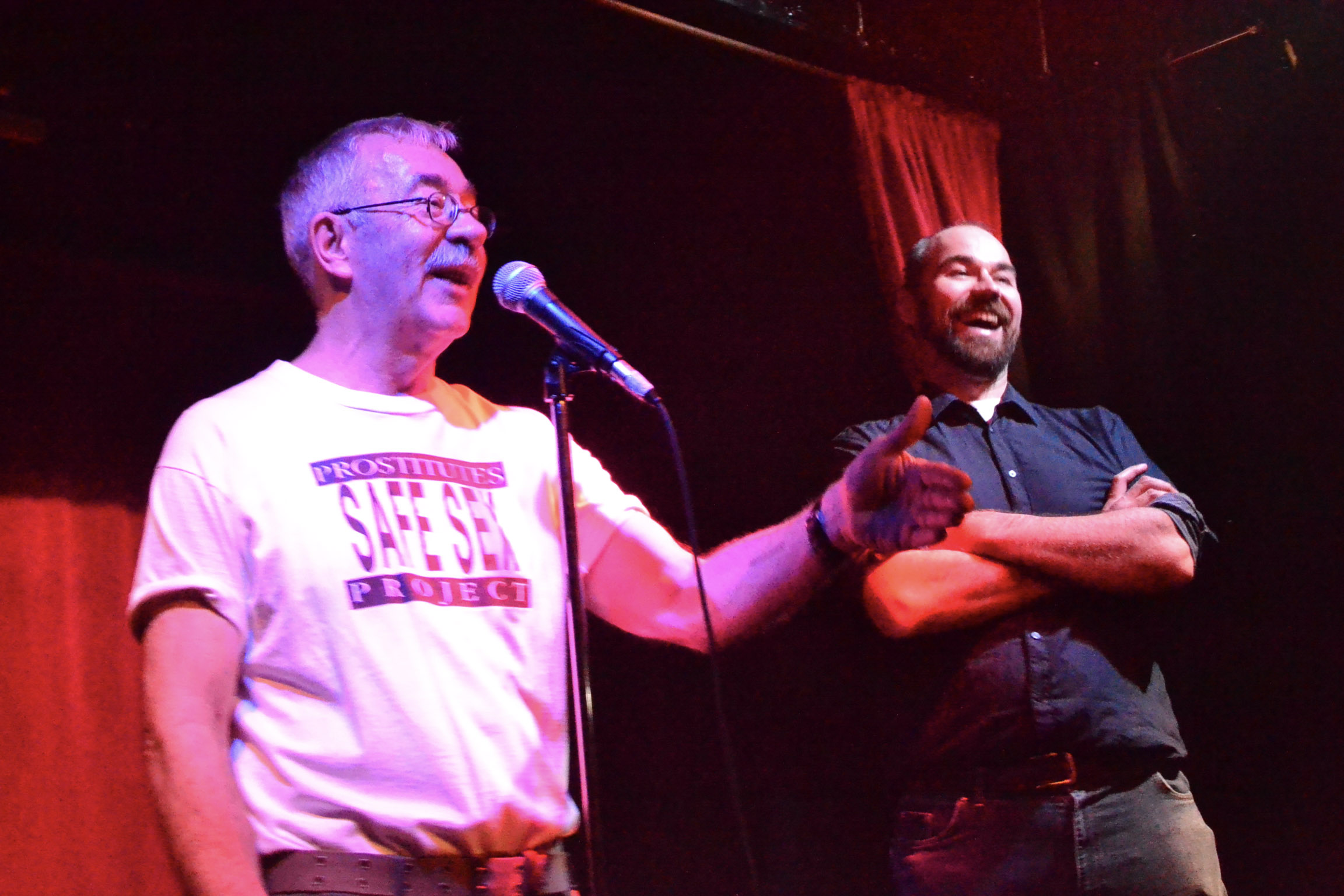
Credit: Andrea Houston/Xtra
My life re-entered headline mode: “Ryerson suspends its prostitute prof”; “Embattled professor suspended by Ryerson”; “Hooker-prof flouting law: minister”; “Ryerson suspends teacher in prostitution disclosure.” This last story, from The Globe and Mail, was the most accurate and balanced; it recognized that I was a teacher, for starters, never a professor. (Full disclosure, it was written by Michael Grange, a former night school student of mine.) My current students were learning first-hand what it was like to be involved in what often gets called a “media firestorm”—the press, both print and electronic, was constantly tracking them down for interviews and quotes, and some students, on their own initiative, offered themselves up or wrote letters to the editor. Adam Hunt, in a Toronto Sun interview, said Ryerson just wasn’t ready for a teacher like me and wondered, “How many old white men with two kids and a mortgage do we have to be taught by?” (I may have been old, white, male and mortgaged, but at least I was kid-free.) Stacey Langbein, who wanted me back on the job and clearly understood how the media was shaping public opinion, told The Eyeopener, Ryerson’s alternative student paper, that she was going to get in the media as much as possible: “That’s where the battles are fought.” Carolyn Gleeson, in a Toronto Sun letter of the day, wrote that I was “the type of professor that journalism students desire—a teacher who is open-minded, actively involved in the writing community and not afraid to experiment with the conventions of traditional journalism. I hope he continues to teach students at Ryerson. Most of all, I hope he shares with them what he shared with my class—that writers who break the rules of journalism are often those who write the most compelling pieces of work.”
I might have added that writers who break too many rules had better be prepared to deal with the dark side of celebrity that we call infamy. Whenever I left my apartment, there were looks, nudges and whispers as I walked down the street. Cab drivers wondered if I was the guy they’d seen on TV. Young men working on the elevators in my building broke into winks and grimaces as I passed, one of them saying, “I’m going to hurl.” Movers in the hall outside my apartment apologized for banging something against my door, and then one of them suddenly said, with what I thought was a threatening voice, “Aren’t you Professor Hannon?” When I rather timidly acquiesced, he said, “Could I shake your hand, sir?” adding that he didn’t agree with everything I said, but admired my courage. One day, near Bloor and Avenue Road, someone suddenly clutched me forcefully from behind, and I thought, This is where I die. This is where the knife enters my back. I turned in terror to face a laughing woman, a stranger, who just wanted to say she had really enjoyed my appearance on television the previous night.
This excerpt is taken from Immoral, Indecent, and Scurrilous, by Gerald Hannon, published by Cormorant Books Inc., Toronto. Copyright 2022 © Gerald Hannon. Used with the permission of the publisher.
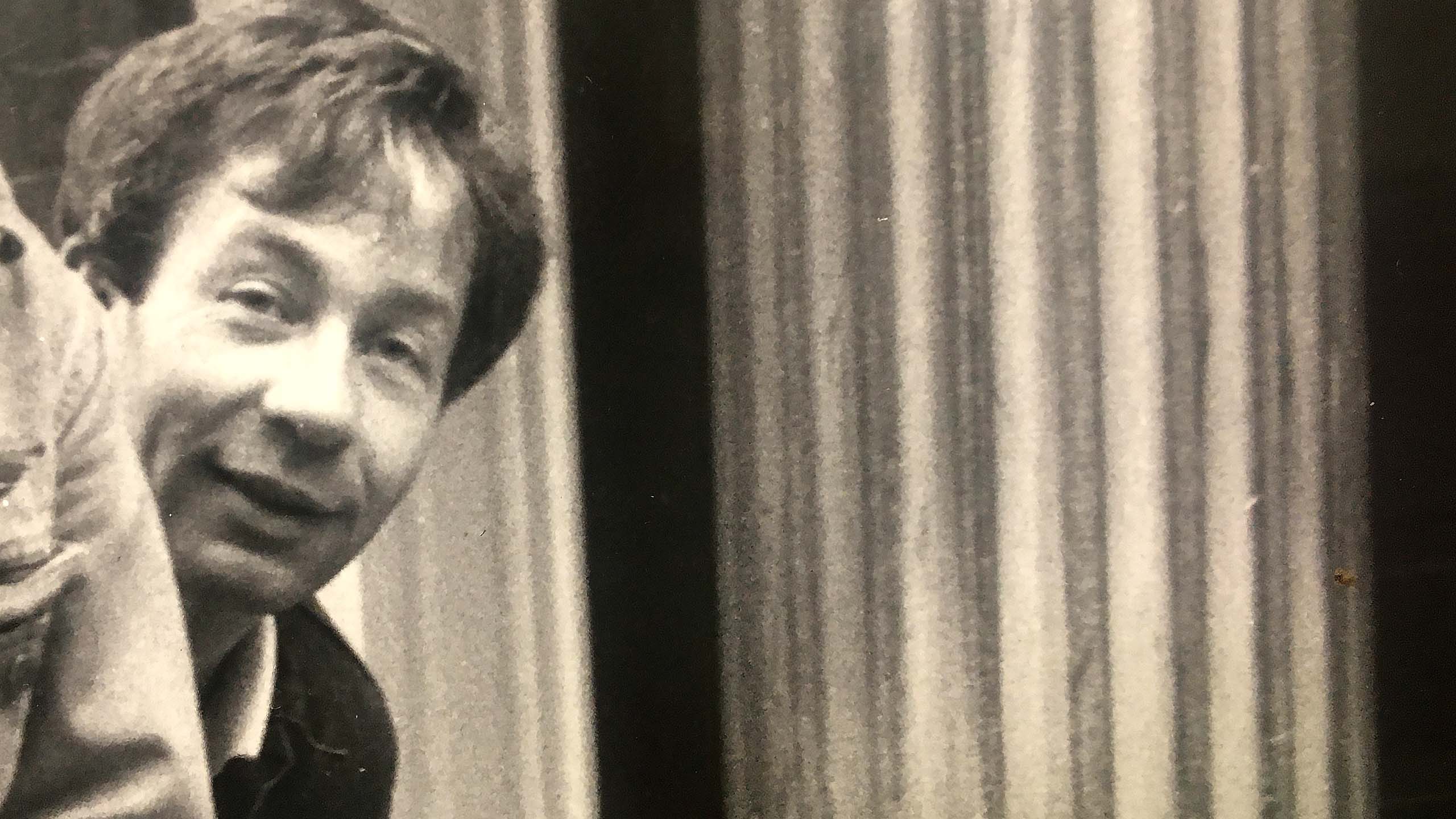
 Why you can trust Xtra
Why you can trust Xtra